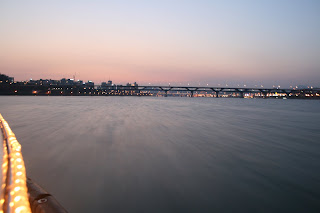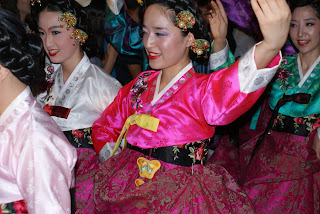
Since our arrival in Korea, we have received multiple warnings from the local restaurants to national advertisements on T.V. cautioning from the certain death followed by eating American beef. Although, technically Mad Cow disease has less than a .001% chance of infecting Koreans and will only show symptoms ten years after consuming infected meat, the Koreans are certain that not only has Mad Cow disease infected their president who contracted with the “Crazy Americans and their cows’, but also every product imported from the States. As a result beef products have decreased in price as Koreans refuse to “jeopardize their future” for a piece of meat. We would have liked to take advantage of this fortunate skepticism but beef prices still hang around $12 U.S. dollars a pound. While this crisis has cause restaurants to post “Australian and New Zealand beef” signs at most places (including McDonalds and Burger King), it has been for the most part just an exercise in pandemic fear and a bit of anti U.S. spirit. Example, Conversation with my students:
Me :“Japan took over Korea and put many men into prison.”
Student: “Yes, they did awful things to them in prison. They hurt them and killed them. Japan is bad.”
Me: “Yes, some people from Japan were bad at that time. That’s why U.S.A. came over to help the Korean be free from Japan.”
Student:”Ah, yes… Americans are good.”
I am smiling, thinking I have done my patriotic duty of slanting Korean history for a ten-year-old when he replies.
Student:”But teacher… Crazy Cow… Americans are bad.”
I have no reply. But who knows may be the Koreans did eat some of the beef.





















